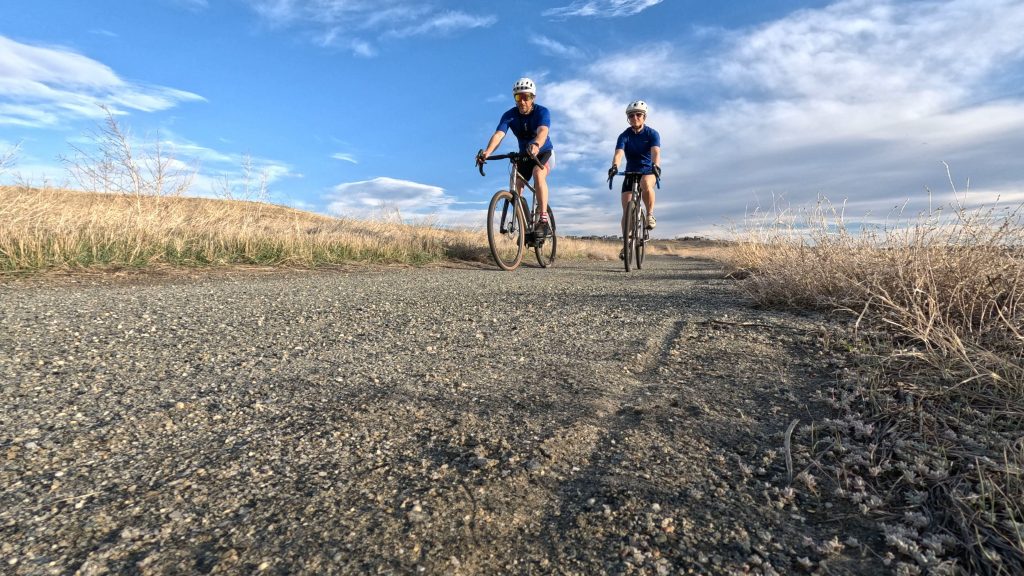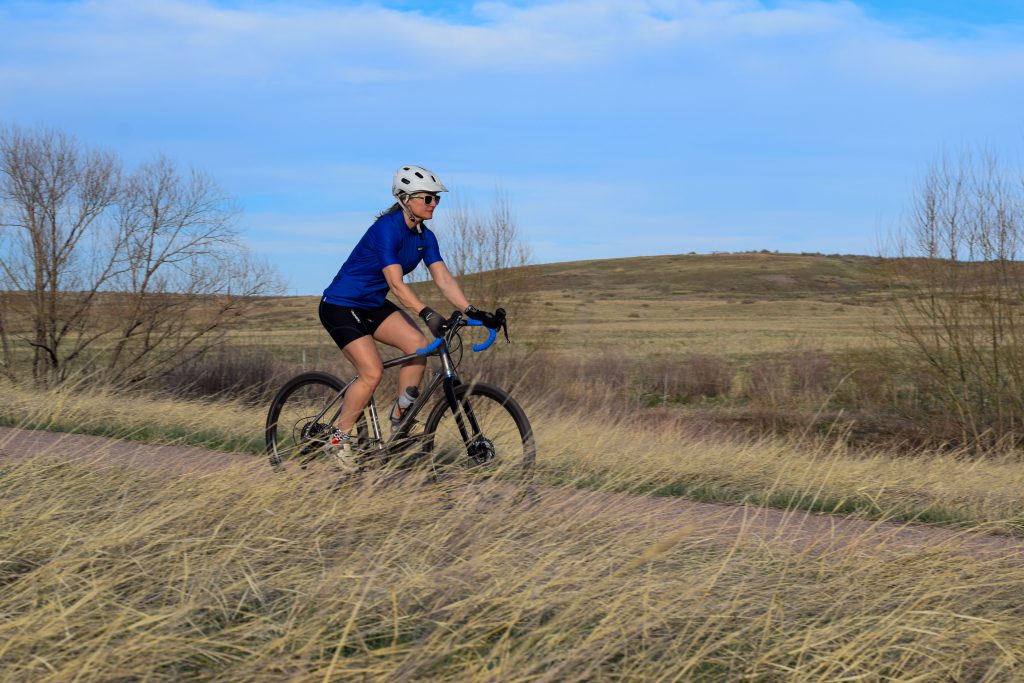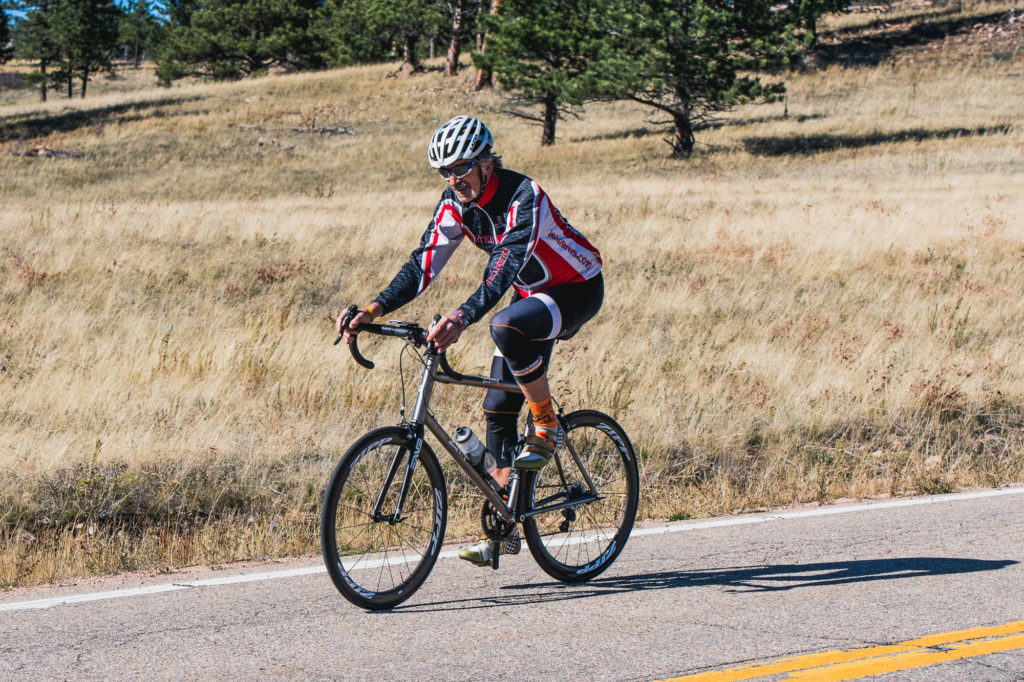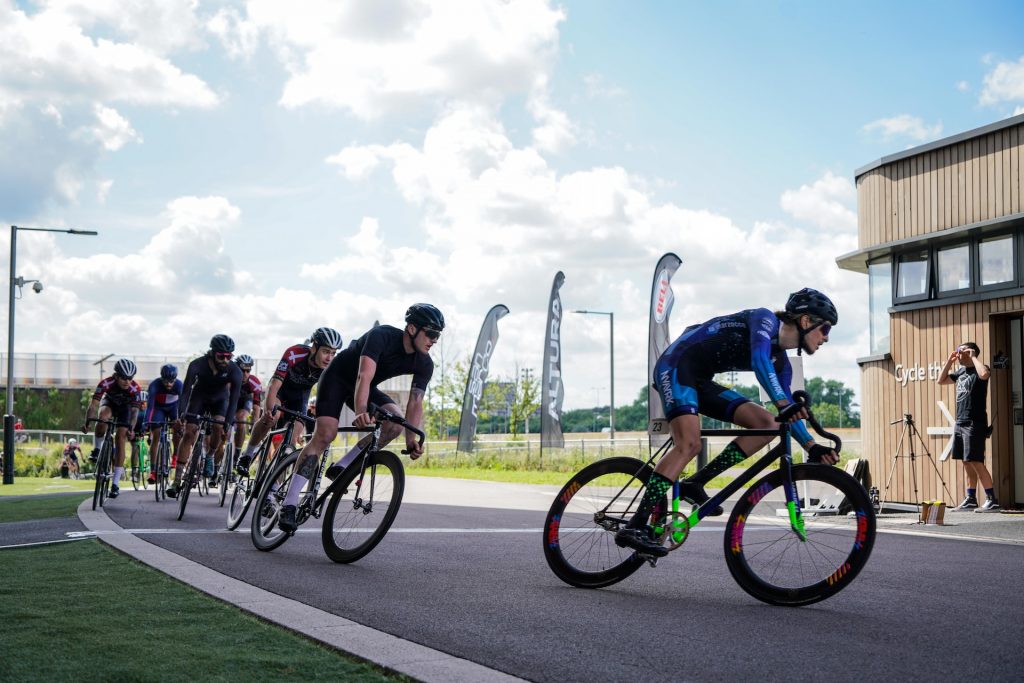Some Pros Are Winning With Short Cranks—Shorter Than What?
By Lennard Zinn
It’s been in the news recently that some high-profile pro riders, like Tadej Pogačar and Tom Pidcock, as well as many top triathletes, are using 165mm cranks. This is always described as a short crank. However, whether a measurement is deemed short or long depends on its comparison with another measurement. Pogačar’s and Pidcock’s cranks are short relative to what? It seems arbitrary to consider them short simply because that is the shortest length that big component manufacturers produce. Obviously, 165mm cranks would be long relative to a 5-year-old child!

Pogačar is 176cm (5 ft 9 in) tall, and Pidcock is 170cm (5 ft 7 in) tall. In measuring people for 42 years to fit them on bicycles, I have found the ratio of height to inner leg length (not pants length—actual measured length from the pubic bone to the floor—often about 2” longer than the pants length) to be generally in the range of 2.0 to 2.25. That puts Pogačar’s inner leg length in the range of 88cm down to 78cm and Pidcock’s in the range of 85-76cm. So, the ratio of crank length to inner leg length with a 165mm crank for Pogačar is in the range of 0.188 to 0.211 and for Pidcock is in the range of 0.194 to 0.218.
Another way to look at this is not to guess a rider’s inner leg length and instead just look at the ratio of body height to crank length for each rider and compare them. Pogačar’s ratio of height to crank length with a 165mm crank is 0.094, and Pidcock’s ratio of height to crank length with a 165mm crank is 0.097.
Now let’s consider a rider achieving great success on cranks much longer than that. Miguel Indurain won five Tours de France with 180mm cranks, and he was 186cm (6 ft 1 in) tall. These same calculations put Indurain’s ratio of crank length to inner leg length with a 180mm crank in the range of 0.194 to 0.218 and his ratio of crank length to height at 0.097—identical to Pidcock! Just like Pidcock, Indurain was racing with a crank that was 9.7% of his height and somewhere between 19.4% and 21.8% of his inner leg length. So, Indurain’s hips and knees were going through a similar angular range as Pidcock’s. Similarly, the relative extension and contraction of Indurain’s leg muscles through the pedal stroke was also similar to Pidcock’s. So, if you say that Pidcock is using a short crank, then you must conclude that so was Indurain, since their cranks were the same length relative to their bodies.
Furthermore, Chris Froome, like Indurain, is also 186cm (6 ft 1 in) tall. He won three consecutive Tours de France with 175mm cranks. These calculations show that Froome’s ratio of crank length to height is 0.094—identical to Pogačar’s! So is Pogačar really using a short crank?
Bradley Wiggins, at 190cm (6 ft 3 in) tall, won the 2012 Tour de France on 177.5mm cranks, making them the shortest of these relative to his height; his ratio of crank length to height is 0.093—lower than any of these other riders. And when Wiggins a few years later reduced his crank length to 170mm to allow him to fold further forward and reduce his aerodynamic drag on his aero bars to set the world hour record on the track, his ratio of crank length to height was 0.089 (making his ratio of crank length to inner leg length in the range of 0.179 to 0.201)—lower than any of these other riders. So, clearly, Wiggins’ 177.5mm Tour de France-winning cranks have to be considered short—shorter than those of these other riders, and his 170mm hour-record-setting cranks must be super short!

Everyone knows at some level that crank length needs to be proportional to rider height or leg length. It’s obvious to parents when they buy a bike for their 4- or 5-year-old kid that it should have short little cranks (and little 12” wheels). If the kid tried to pedal, say, a 170mm crank, those little legs could not turn it around because the knee and hip bend would be too sharp at the top of the stroke (and the cadence would be so slow that they would lose momentum and tip over by the time they finally got it around once to start the next stroke). And when the kid outgrows that bike, the parents don’t question slightly longer cranks (and bigger, 16” wheels) on the next bike, and once again to the 20”-wheel bike until they graduate to a bike with standard adult crank length and wheel diameter.
Consider for a moment the powerlifting movement, the deadlift. The gluteus maximus (and adductor magnus) muscles extend the hips, while the quadriceps muscles extend the knee. The hamstring muscles both shorten and lengthen during the lift, since the hips extend fully (hamstrings shorten), while the knee extends through 75% of its range (hamstrings lengthen). If the knees are bent too far at the beginning of the lift (i.e., like on a bike with cranks too long for the rider), the weightlifter cannot lift as much, because the quadriceps cannot contribute, and the glutes do all the work. The same thing goes if their knee bend is too shallow (i.e., like on a bike with cranks too short for the rider); the glutes cannot contribute much, and the quadriceps do most of the work. The muscles simply work most efficiently for a given discipline over a relatively narrow range of joint angles; pick the right joint angles (which is what the right crank length does), and you recruit the most muscles working the most efficiently.

Power in cycling is torque multiplied by cadence, and torque is the force applied to the pedal times the crank length. Since it is a linear relationship, if the crank length is reduced (thus reducing torque) while the cadence increases by the same percentage, then the rider’s power output will be the same. It should be obvious that a rider cannot spin a longer crank at the same RPM as he or she can spin a shorter crank (consider it at the limits if it’s not obvious; imagine trying to turn a 500mm-long crank at 90RPM, and think of how ridiculous it would feel to only turn a 50mm-long crank at 90RPM!). So the extra leverage of a longer crank is at least somewhat offset by the lower cadence the rider will naturally select when using it. And the reduced leverage of a shorter crank is at least somewhat offset by the higher cadence the rider will naturally select when pedaling it.
Since you can produce similar power over a wide range of crank lengths by adjusting your cadence (and hence your gear selection) accordingly, if you want to maximize speed in an event where aerodynamics trumps all other concerns (time trials and draft-illegal triathlons, for instance) you should certainly shorten your crank length like Wiggins did for his hour record on the track to around 18% of leg length. On the other hand, if you are not going to be riding in an aero position, perhaps would like to maximize your climbing speed, and you want your muscles to work most efficiently, then a crank length more in the 20-21% of leg length range will benefit you. Years of testing with myself always showed that I climbed fastest in that crank-length range, and many of our customers tell me the same thing; some have even produced graphs or tables showing it. More importantly, customers often tell me that “it feels more natural” to ride with cranks in that range. That can be way out of the range of brand-name cranks—like 150mm cranks for 5’0” riders and 200mm cranks for 6’6” ones. The bike industry in general simply doesn’t provide the crank-length range necessary for the range of rider sizes. So we do! Click here to see our cranks shorter than 170mm and here to see our cranks longer than 175mm.



